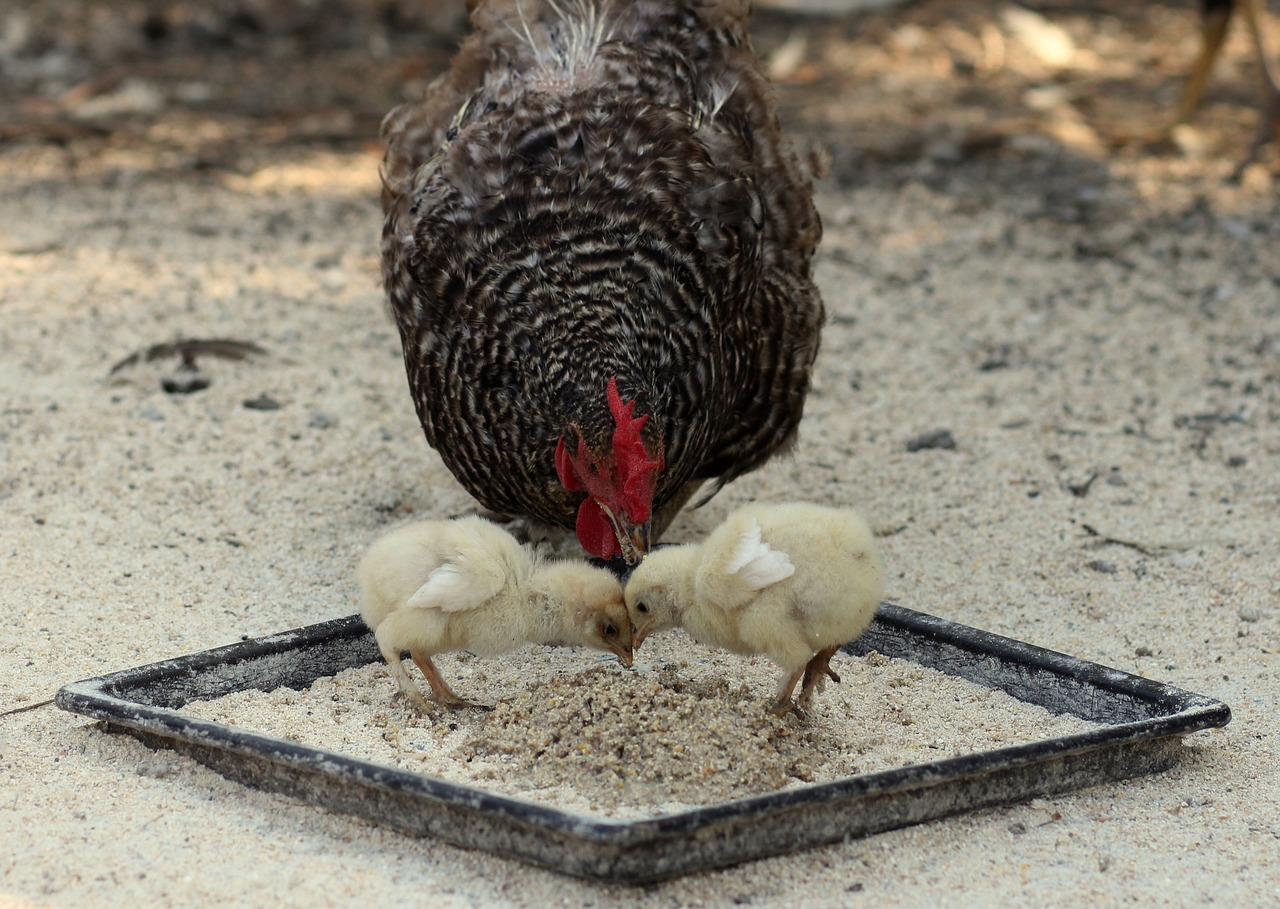Have you just brought home your first-ever group of adorable baby chicks?
There is nothing more rewarding than watching your little fluff ball mature into an elegant, productive rooster or hen.
However, raising baby chicks isn’t all about cuddles and photo ops – you need to make sure you are providing your young birds with the proper nutrition so that they can grow into mature adults.
Not sure where to start?
Consider our ultimate guide to feeding baby chicks, where we will tell you all about how, what, when, where, and why you need to provide your chicks with a special diet.
Nutritional Requirements of Chickens
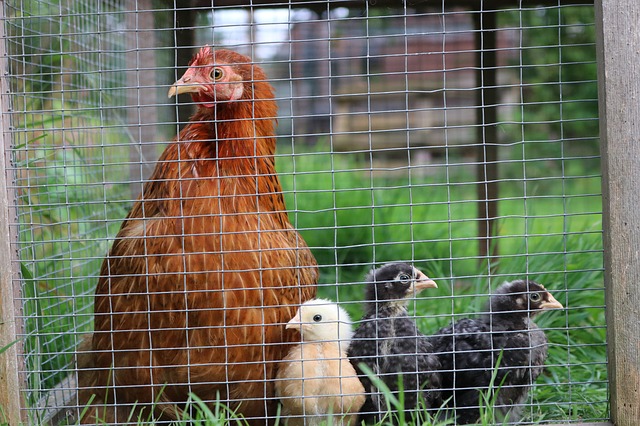
Chickens need to have certain nutritional requirements met at each stage of their lives.
They have varying nutritional needs as they progress through their many life stages.
All in all, though, chickens need the following foods in their diets:
Protein
Protein helps develop strong muscles and encourage good growth. Protein is most important to fast-growing broiler birds as well as to developing young chicks.
Grains
Grain is the cornerstone of your chicken’s diet. Usually, commercial feeds will include grains like wheat, oats, or corn. These grains provide all the phosphorus, B-vitamins, and whole grains (as well as more protein) that your chicks need to stay healthy.
Vitamins and Minerals
Chicken need certain vitamins, such as vitamins A, D, and B. They also need salt. In most cases, a chick starter or another type of commercial feed will provide all the vitamins your chickens need. Adult birds may also be fed leafy greens and other scraps to provide additional nutrients, too.
Fat
Chickens need fat to produce energy and essential fatty acids that are needed for certain bodily processes.
Grit
Adult birds need access to grit, as do young chicks. Birds who are allowed to free-range can find and consume their own grit.
Confined birds in a brooder or coop need grit at least once a month, but you will need to select grit that is size-appropriate.
Make sure you aren’t giving your hicks anything bigger than sand!
Calcium
You won’t need calcium in a young chick’s diet, but as your chickens mature into laying hens, they will need calcium.
This is usually provided via a layer feed, but can also be supplemented with oyster shell.
Water
Chicken need plenty of clean, fresh water.
Chickens will drink three times as much water by weight as what they eat in feed.
You will usually need about one quart for every four adult chickens. Water intake will increase as your chickens age as well as when it is hot outside.
You may also notice your birds drinking more water just before they get ready to start laying.
Types of Feed
To meet these needs, you will need to find a feed that is formulated specifically to the stage of life that your chickens are in.
Here are the three main types of feed you will find in your local farm supply store.
Starter feed
This is the type of feed needed by baby chicks.
Newly hatched chicks (until at least eight weeks of age) must be fed a balanced chick starter with a protein level that ranges between 10 and 20 percent- 18 is ideal.
These rations provide all the nutrition your young chicks will need. In a pinch, you may be able to get away with using a higher-protein starter (22 to 24 percent protein) for broilers and roasters.
If you’re raising chickens solely for egg production, this is cautioned against.
Grower feed
Grower feed can replace the chick starter feed at around ten weeks of age (eight is often acceptable as well, although you will want to work on transitioning your birds off the starter and into the grower feed between weeks eight and ten).
Gower foods usually hate about fifteen to sixteen percent protein.
If you are also raising growing game birds, like guinea fowl or ducks, with your chickens, you may be able to feed your chicks the same kind of grower feed -just keep an eye on the protein content.
Layer feed
Layer feeds are fed to chickens who are laying eggs for your consumption.
These feeds will contain sixteen percent protein, just like grower feeds, but are unique in that they contain additional calcium.
The calcium helps support shell development and should be fed either at 18 weeks or when the first egg is laid, whichever comes first. It’s important that you do not feed layer feed to developing chicks and pullets or roosters, as this can harm their kidneys.
Factors Affecting Your Chick’s Nutritional Needs
Not all chickens will have the same nutritional needs. The nutrients your specific chicken will need can vary depending on its:
- Genetics – Some breeds or strains of birds have different body sizes, growth rates, and productivity levels and will, therefore, require feed with different levels of efficiency.
- Age- Older chickens will be larger and will, therefore, need more food. However, chickens who are no longer laying due to their age will not need quite as much.
- Sex – Gender does not play a huge role in feed consumption prior to sexual maturity – as chicks, both genders can usually be fed the same amount of food.
- Temperature – Chickens need more calories than colder they are.
- Housing – When you keep your chickens raised in confinement, they will need fewer calories than if they were allowed out to free-range (which would cause them to burn calories). However, the inverse of this is that you will not likely feed free-range birds as much since they will make up for most of those calories by finding their own food in the yard.
What Do Baby Chicks Eat in the Wild?
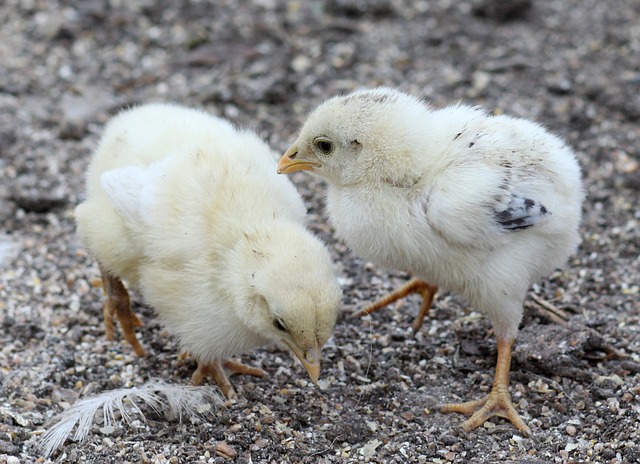
Why do we mention the diet of a baby chick in the wild?
First of all, it’s important that you try to replicate the diet of a chicken in its natural element as much as possible.
Secondly, if you are raising a chick that hatched beneath a mother hen, you will want to make sure you ease the transition from hatching to adulthood as well as possible.
In order to hatch a chick from a broody hen, you will need, of course, a broody hen! This instinct has been mostly bred out of chickens, but there are always some that will have a tendency toward broodiness.
If you’re lucky enough to have this happen in your coop, here’s how you should be feeding your chicks.
In nature, chicks will follow their mothers as they figure out what they are supposed to be eating.
They may peck at bugs, small worms, or even greens as they explore this exciting new world.
Some baby chicks will eat small mice and frogs, too, as they get bigger. Chickens are omnivores, after all, and young baby chickens are no exception!
If you have a broody hen that has hatched her own chicks, you can allow your birds to follow their mother and figure it out on their own.
You may also want to put out some chick starter, too. Just make sure this is in a separate location from your adult chicken’s feed, as too much chick starter can cause diarrhea in adults.
Otherwise, it’s okay if she gets into it from time to time (as long as it is unmedicated).
What to Feed a Baby Chick
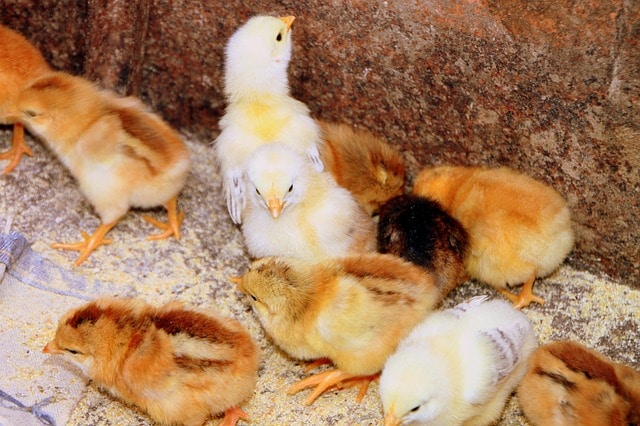
Regardless of whether you purchase chicks from a hatchery or are hatching your own in a home incubator, you will need to provide a specialized diet that makes up for everything you chick would normally get from nature.
Chicks who are hatched at a hatchery are normally shipped at one-day-old.
They are safe to be shipped during this time as they can live for 48 hours on their egg sacs alone.
If you hatch your own eggs at home, know that the eggs will take about 21 days to hatch.
You should watch your incubator carefully during the hatching window (which could be anywhere from 20 days to 24 days, depending on the accuracy of your timing). Make sure your chicks aren’t left in there too long, as they can’t live forever without food and water.
Some chick hatchers add a supplement to the bottom of the shipping container in case your chicks get delayed in shipment.
Usually, your chicks won’t touch these unless they become curious.
If you are hatching chicks in your own incubator, make sure you leave them there until they are dry and fluffy and don’t worry about them starving – they will be fine for two full days.
You should provide your birds with a chick starter feed that contains at least 18 percent protein.
This high level of protein is necessary to provide your chicks with the energy they need for the rapid amounts of early growth they will experience.
A good chick starter will also contain amino acids, probiotics, prebiotics, yeast, vitamins, and minerals.
This combination will support the healthy development of bones and organs.
A chick starter is definitely recommended, but you can also opt for a starter-grower feed that will help ease the transition after chicks no longer require chick starter.
Do you have to purchase commercial chick starter?
Of course not!
As long as you are providing your chicks with the nutrients they need, there are plenty of DIY alternatives to traditional chick starter.
For example, you could feed:
- Hard-boiled eggs mashed with oatmeal
- Milled oats
- Small amounts of bread or lettuce
- Worms
- Cornmeal mixed with uncooked oatmeal
- Eggs with stale bread crumbs
- Scaled biscuit meal with parsley
Just make sure you meet the nutritional needs we mentioned above!
Remember, dry food like commercial chick starter won’t need a lot of preparation and it won’t go sour in your chicken’s crop.
It can promote feather growth and will fill your chicks up faster, too.
Do I Need to Purchase Medicated Feed?
Whether you need or want to purchase medicated feed is up to you.
These can help prevent the potentially deadly disease known as coccidiosis.
Depending on your circumstances, you might be able to get away without using it. Coccidiosis is a parasite that young chicks get from pecking at feces infected with the parasite.
It’s only common in dirty areas where the parasite can already be found.
Most chicks that can be purchased from a hatchery are already vaccinated against coccidiosis – check with your hatchery, and if that’s the case, you can forge medicated chick starter.
It won’t necessarily hurt your chicks to feed them medicated starter, but you don’t need to double-up, either.
If you’re hatching chicks at home and know you have a sterile environment that will guard against coccidiosis, you don’t need to worry about it, either.
However, it can be better to be safe than sorry, too.
Some veterinarians recommend using feeds with antibiotics. These aren’t usually required unless recommended by a professional.
Usually, your chicks won’t need antibiotics unless they are already suffering from an illness.
Can Baby Chicks Eat Leftovers?
Yes! Baby chicks can eat leftovers and table scraps just like adult chickens can. However, you need to be careful that you do the following when you feed scraps:
- Make sure the foods you are feeding are chicken-safe foods
- Cut all foods into tiny pieces to prevent a choking hazard
- Feed treats as treats only and not as a substitution for regular nutrition and feed
- Clean up any uneaten scraps in the brooder immediately to prevent contamination
Some good options for kitchen scraps to feed your chicks include:
- Spinach
- Lettuce
- Kale
- Raspberries
- Strawberries
- Scrambled eggs
- Yogurt
- Oatmeal
- Pumpkin
- Broccoli
When feeding vegetables, you may want to wait until the chicks are a few weeks old. This can prevent any issues related to compaction or digestive problems, too.
What Should Chicks NEVER Eat?
Make sure you are providing your chicks with a balanced source of nutrients from feed before supplying any treats.
Otherwise, you will want to avoid any foods that are overly salty, sweet, or processed.
You should also avoid feeding chicks:
- Avocado
- Rhubarb
- Garlic
- Raw tomatoes or potatoes
- Chocolate
- Raw or dried beans
- Moldy or expired food
Apple Cider Vinegar for Chicks
ACV, or apple cider vinegar, is a home remedy that many chicken keepers swear by.
If you spike your chicks’ water with a tablespoon of apple cider vinegar per gallon, you may see some positive effects.
You can encourage beneficial yeasts and bacteria to flourish in the intensities of your chick by doing this, and since it’s inexpensive, it’s recommended.
If you don’t want to use ACV, for the smell or for some other reason, you can also purchase probiotics that can be dissolved in water or sprinkled on feed.
These will give your chicks a dose of the healthy gut flora that will be needed in their intestines.
Yogurt may also work, but it can cause diarrhea – so use it sparingly.
Do Baby Chicks Need Grit and Calcium?
There’s a lot of research out there about whether baby chicks need supplemental grit and calcium.
Chicks should never be given additional calcium – it can cause health problems.
When it comes to grit, the choice is up to you.
If your chicks are only eating chick starter, they probably don’t need extra grit.
However, if you are giving them supplementary foods like kitchen craps, adding grit to your chick’s diet may be beneficial.
If you feed grit, just make sure it’s small. You should use a chick-sized granite grit or parakeet grit for best results.
How to Feed a Baby Chick
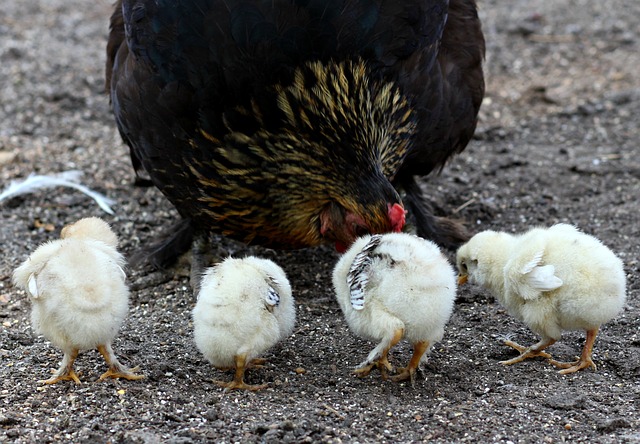
When you first bring your baby chicks home, you will need to set up your brooding area.
Ideally, this will be completed before you carry your chicks to the brooder because you will want everything to be set up adequately (and nice and warm!) before you need to take your chickens out of their shipping container.
Waiting to set up your brooder until your chicks have already arrived is a recipe for disaster, as it will require them to be out of a warm area for much longer than necessary.
If you are raising just a few chicks (less than 30), you can use a large box with walls that are at least a foot and a half high.
Some people use plastic totes or other makeshift brooders, and this works just fine in most cases, especially if your box can be placed in a safe area that is not exposed to drafts or interference from household pets or small children.
You do need to be careful about using plastic containers if you are using a traditional heat bulb, as it can melt the plastic.
Cover the brooder with either a towel or screen and then set up your brooder lamp or heat plate.
Chicks need to be kept at temperatures between 95 and 100 degrees for the first two weeks of life and the temperature will then be reduced by about five degrees each month.
You should use a red brooder bulb to make sure your chicks don’t peck each other.
Your chicks will do a good job of telling you whether they are cold or hot, and this can be evidenced in several different ways.
Chicks who are not at the proper temperature may eat too much or too light. Cold chicks will also huddle together beneath the heat, while warm birds will crowd the edges of the brooding area.
When you provide food and water for your baby chicks, you will need to consider the bedding.
Until your chicks learn what food is, it is not uncommon for them to try to eat pieces of bedding as an alternative.
This is quite commonplace, especially if you use a bedding type that looks like your chick’s food, such as pine shavings.
To resolve and prevent this, spread out paper towels or newspaper each day.
That way, the food particles will contrast sharply against the backdrop of the paper towel.it will also help your chickens gain firm footing so that their legs develop appropriately.
You can reduce the likelihood of food-related competition by making sure all chicks have access to free-choice food.
Limiting food consumption will not only stall the growth of your baby chicks, but it can also cause problems with pecking, particularly around the wing bow, tail, and neck areas.
When your chicks first arrive, you need to teach them to drink water before you can introduce them to food.
Start by offering water free-choice, at room temperature, and wait for a couple of hours before giving feed.
Some people add ¼ cup sugar and 1 teaspoon of Terramycin to the initial drink of water to boost immunity and reduce shipping stress.
This will give your chicks some time to rehydrate before they start to eat. You will need to dip the beaks of your chicks into the water to help them locate it.
While some people only do this for a couple of chicks, assuming that they will teach others how to find water, it is advisable to show every individual check whether the water is and to monitor them for the first few hours to make sure they all are drinking.
Once you are satisfied with the knowledge that your chicks have had a chance to rehydrate, you can start providing them complete chick starter feed.
You should feed them first on a flat surface. You might use the following repurposed items:
- Paper plate
- Squares of paper
- Shallow pans
- Clean egg flats
- Shoebox lid
You can also purchase a flat feeder for this purpose, but there’s really no need – any of the items we’ve mentioned above will work just as fine, and you probably already have them lying around your house.
After the first couple of days, you can transition your chicks out of the flat surface feeding technique and into an actual chick feeder.
How Much to Feed a Baby Chick
You will see a lot of different recommendations as to how much you should be feeding your baby chick, and honestly, it will vary a bit between individuals.
However, a good recommendation is to never let the chicks go without food or water.
Fortunately, most commercial feeders and chicken waterers are designed for this kind of long-term automatic feeding.
You should feed chicks a 20% protein starter ration for the first eight weeks of life. After that, you can switch can 18 to 19 percent chick grower.
You should feed your chick a complete chick starter feed from day 1 until week 8 – although chick starter is acceptable until week 18 in some cases.
Most people feed their chickens free-choice, also known as full feeding. This provides your birds with consistent feed at all times.
An average laying hen will eat about ¼ pound of food each day, but this varies depending on the size of chicken, activity and productivity levels, and weather conditions.
Try not to leave the feeders empty, and don’t let uneaten food accumulate.
Not only does this lead to a mess, but leaving feeders empty will encourage your chicks to peck each other.
Just one chick will eat about ten pounds of chick starter before it’s ready to be switched to an adult feed.
Make sure you have plenty of food on hand to support your growing flock!
As your chicks age and mature, their nutritional needs will change.
You will need to clean and refill waterers and feeders daily, and you also may need to raise the height of these items so that they match the growth of your chickens.
At about eighteen weeks of age, you can change the type and quantity of food you are feeding your chicks.
You will need to transition chicks designed to lay onto a high-calcium feed and those that are meat birds onto a complete feed.
Safety Considerations for Feeding Chicks
Unfortunately, the list of things you need to consider when it comes to feeding baby chicks doesn’t end with what type of food to buy.
You also need to consider your own health when it’s time to feed your chicks.
The reason why is both simple but significant.
Live poultry can carry salmonella bacteria in both their droppings as well as on their bodies.
Even chicks who appear to be perfectly healthy can spread germs to and from coops, cages, hay, soil, and plants where they live.
You can also carry these germs on your hands and feet.
People who become infected with salmonella usually contract it by putting their hands in their mouths after contacting something that has contained salmonella.
Young children are especially at risk, so make sure you familiarize your children with good hand-washing practices if you ever allow them to handle the baby chicks.
In addition, you should wash your hands with soap and hot water after you touch a bird or anything in their living area.
Try not to let children younger than five handle chicks and don’t eat or drink in your brooder area.
Keep your brooder cleaned at all times, too.
Feeders and Waterers for Chicks
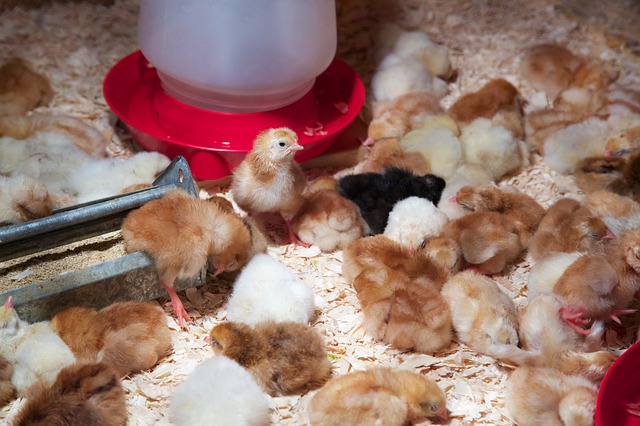
When you are shopping for the equipment you will need to feed and water your baby chicks, you will be faced with an overwhelming amount of options.
You can choose basic chick fountains, which are the basic methods of providing chicks water.
These are ideal because they hold water and contain it so that it is not splashing all over the brooder.
Some people use saucers or basic pans to give their chicks water. These spill and soil the bedding in your brooder prematurely. No matter what you choose, make sure you dip your chick’s beak in the water before you allow it to have any food. This will train your chick about where it can find water.
It’s also a good idea to put some rocks in the base of the drinking fount if it is especially large.
Most chick waterers are designed to be small enough for baby chicks, but if you are using an all-purpose or mature chicken waterer, you will need to be careful with it around your chicks.
This is because the gaps where the water is held are often large enough for your baby chicks to fall into and drown.
To prevent this, simply fill the bottom of the waterer with rocks. This will make it more difficult for your chick to become trapped.
Otherwise, for every 25 chicks, you will want to fill two one-quart waterers with room temperature water. This will provide every bird with enough drinking water at all times.
It’s a good idea to keep water at room temperature to prevent shock and encourage drinking.
Placing the waters just outside of the heat lamp’s radius is a good way to keep things ideal.
You should provide your chicks with about four linear inches of feeder space for each bird.
The feeder you use can be in the form of a canister feeder to a trough – just make sure there is plenty of low-lying feeder space for all birds.
For this, you can purchase a chick feeder or incorporate unique DIY ideas like these.
- Make a chick feeder out of a 5-gallon bucket – You can also use a 5-gallon bucket as a waterer, although you likely won’t have room to do this in your brooder.
- Repurpose old PVC pipe to make a feeding trough – These can be made in self-filling and self-feeding styles, or you can just cut a pipe in half and set it on the floor of the coop.
- Feed out of a plastic tote – If you have a ton of old Tupperware totes or other plastic bins hanging around, you can make a no-waste feeder by drilling holes into and adding PVC pipes. If a quicker solution is what you have in mind, simply feed your chicks out of a low-walled plastic tub.
- Use egg cartons – It’s very easy to make a DIY feeder out of an egg carton! Simply cut the top off and feed your chicks out of the individual egg holes.
- Cut a 2-liter soda bottle in half – Feed your chickens out of the concave sides. That’s all there is to it (just make sure you rinse it well first).
- Glue a bunch of yogurt containers together – Figure out how many chicks you have, and attach multiple yogurt containers together (washed, of course) before filling them with feed. Nice and easy!
When setting up your feeder, you can use a hanging feeder or a trough. Hanging feeders offer a lot of benefits – they keep out pests and your chickens also won’t poop in the grain!
However, you will want to hang your feeder at an appropriate height – about six to twelve inches off the ground – to make sure your chicks are tall enough to eat from it.
When you hang your feeder, watch your bird for a while to make sure they are actually tall enough to reach it.
You can do the same for your chicken waterer. Hanging or trough-style watering are both acceptable. Again, however, keep height in mind.
You can purchase a plastic or galvanized waterer, or choose from one of the following DIY designs:
- PVC chicken waterer – Attach a water bottle or office water container to a PVC pipe and add drinking nipples. It may take your chicks some time to learn how to use these.
- Glass waterer – Take a ½ gallon mason jar and put a hole in the bottom. Flatten the edges and place the water-filled jar upside down in a plastic pan. It might not be a bad idea to attach the jar somewhere on the pan, either. You will fill from the top and give your hicks consistent access to clean water.
- Five-gallon bucket – Attach a five-gallon bucket, upside down, to a flat pan. The water you put in the bucket will fill the pan, as long as you drill holes and allow gravity to do its work.
Keep in mind that although DIY waterer might save some money, it may be worth it for you just to invest the money in special waterer designed for baby chicks.
It can take any kind of chicken a while to figure out how to use a drinking nipple (which is what most DIY plans call for), and baby chicks are vulnerable to dehydration.
You also need to make sure that your chicks never have to travel more than ten feet in order to get a drink of water.
If you need to switch to a new feeder or watering system, make sure you give your chicks time to get acclimated to the new one before you remove the old one.
No matter where you place your food and water, make sure your chicks aren’t able to poop or roost over them. This can cause a lot of mess and can make your animals quite sick.
You might be tempted to put food or water in an open saucer.
This is fine in the beginning, but know that it will create more mess.
Your chicks will walk through the bottom, tracking bedding and droppings into it. They will also have a higher likelihood of becoming wet or chilled.
Why You Should Pay Attention to Your Baby Chick’s Diet
Baby chicks are unique little creatures that have specialized dietary needs.
You wouldn’t fee da human baby the same thing as an adult- nor should you cut corners when it comes to feeding your young chicks.
Follow these rules, and you’ll have a flock of chicks that matures to become healthy, productive, and happy, too.
